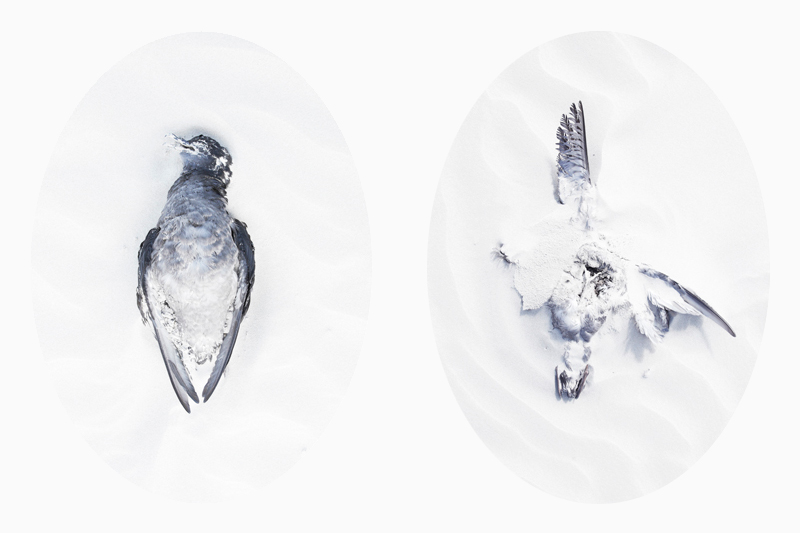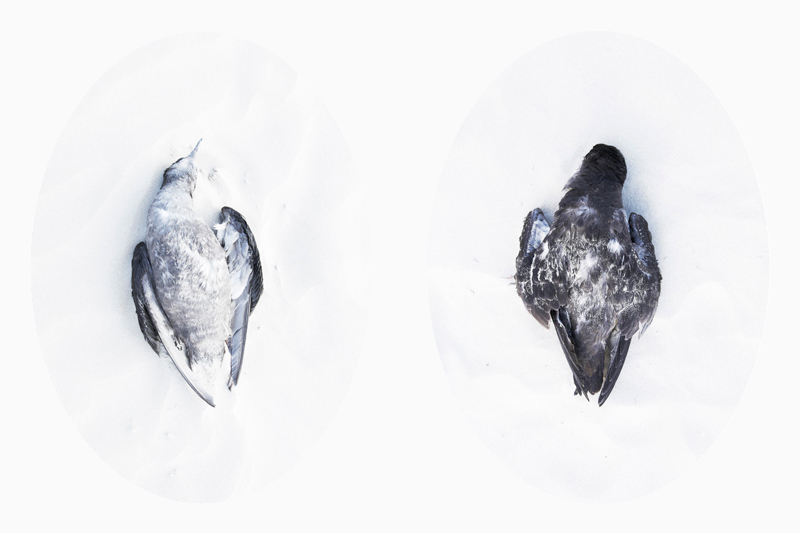Wrecks: Forget Me Not
Documentary Photo Series / 2014
Documentary Photo Series
The annual migration of the Short-tailed Shearwater sees the seabirds travel up to 15,000 kilometres, from the Bering Sea between Alaska and Japan to Australian shores to nest. The long and arduous journey teemed with factors such as exhaustion and starvation can have a devastating effect, leading to the deaths of many Shearwaters.
Beaches in Japan, the Aleutian Islands, North America and Australia become littered with thousands of bodies of Shearwaters that have not survived the journey. These deaths en masse are known as 'wrecks'. It is a natural occurrence for wrecks to happen every ten years, however, since 2007 wrecks have been occurring with increasing regularity, as often as every second year. The year 2013 being amongst one of the worst on record. This has become an issue of great concern, with some experts suggesting that the growing rate of these deaths may in fact be linked to much wider problems of climate change and overfishing.
This series seeks to document and bring awareness to these avian wrecks and their plight through the practice of post mortem photography. It also aims to highlight and examine the inextricable link between photography and remembrance. Memorialising the deceased through imagery was common practice during the Victorian era, sometimes it would be the only photograph ever taken of the subject, their corpses arranged to appear life-like in the image. This aspect is mirrored in the Wrecks series, with some of the final resting poses of the deceased Shearwaters being hauntingly reminiscent of the birds in flight.
The practice of post mortem photography was once considered a sensitive and beautiful process yet has largely ceased in this modern age. Whilst death is an undeniable and irrevocable part of life, images of death and the dying are often classed as taboo or distasteful. On the other hand, the photography of birth and the documentation of early life is a common and celebrated practice. Is this simply due to increased accessibility to photographic technology? A societal obsession with youth and newness? Or is this perhaps indicative of a cultural shift that may reflect a wider social discomfort with death?
Ultimately it is with hope that this series can serve as a memorial and homage to the lives and journeys undertaken by these Short-tailed Shearwaters.
For further information on the issues facing Short-tailed Shearwaters please visit the website of Dr. Jennifer Lavers






